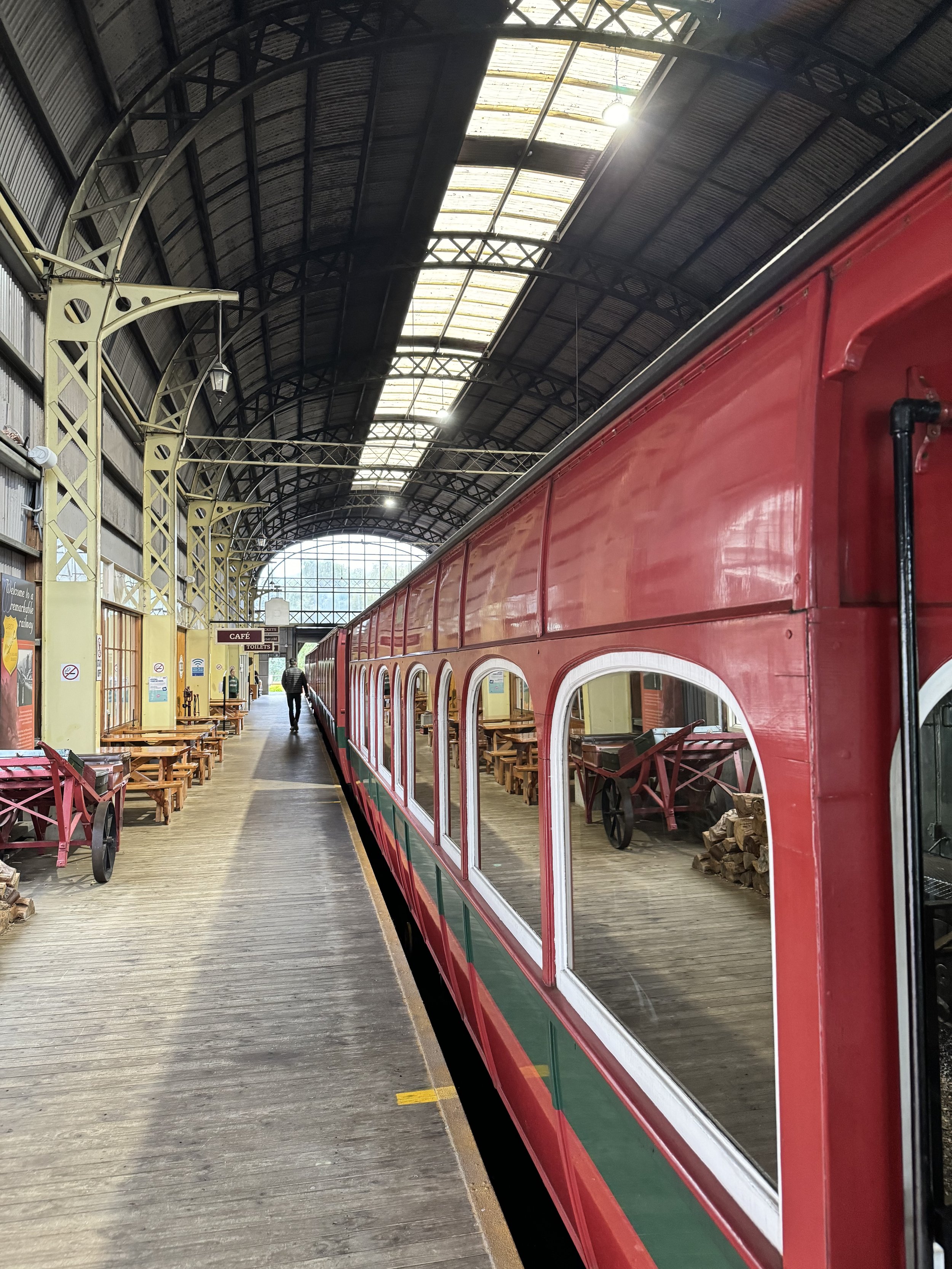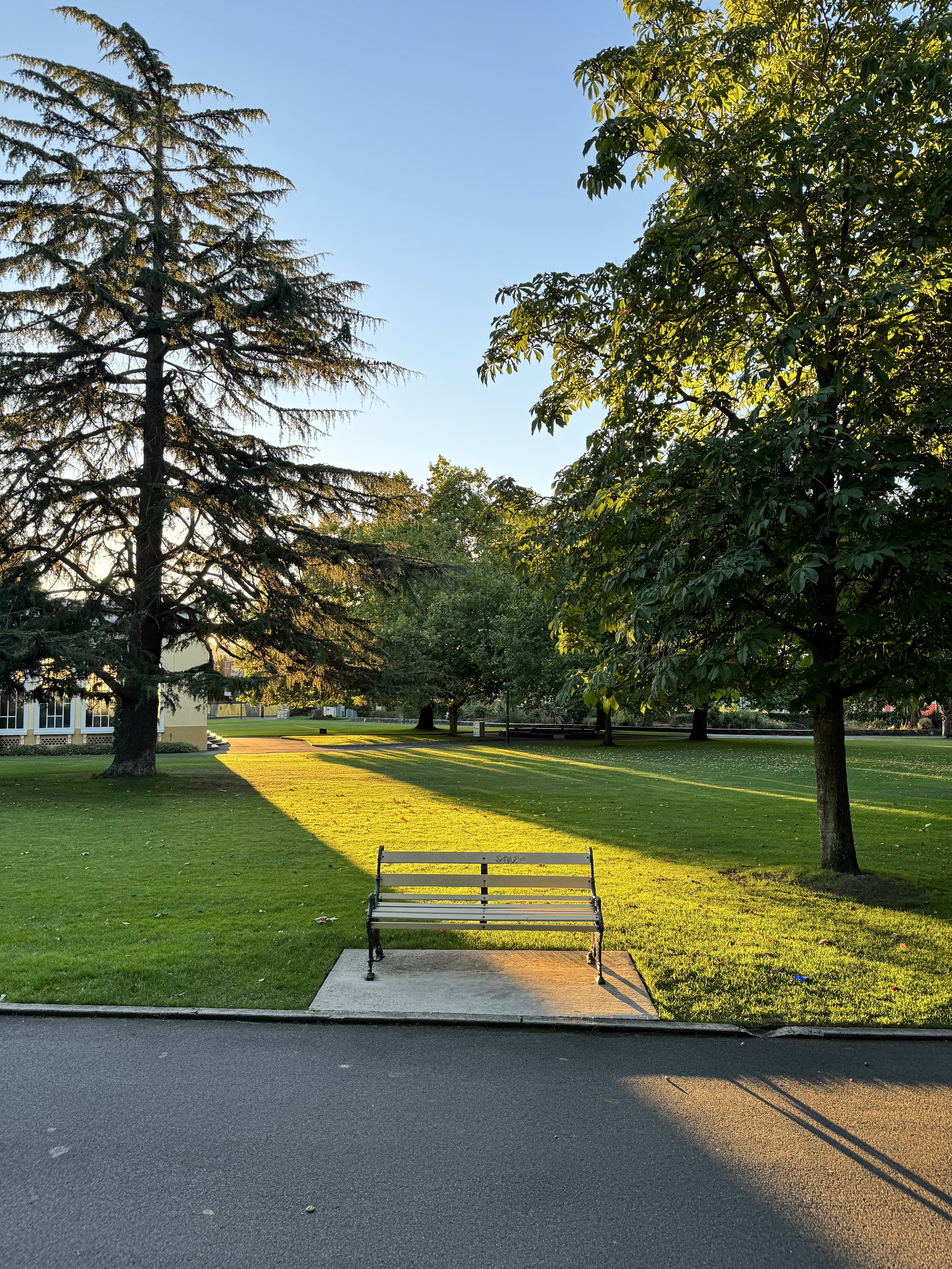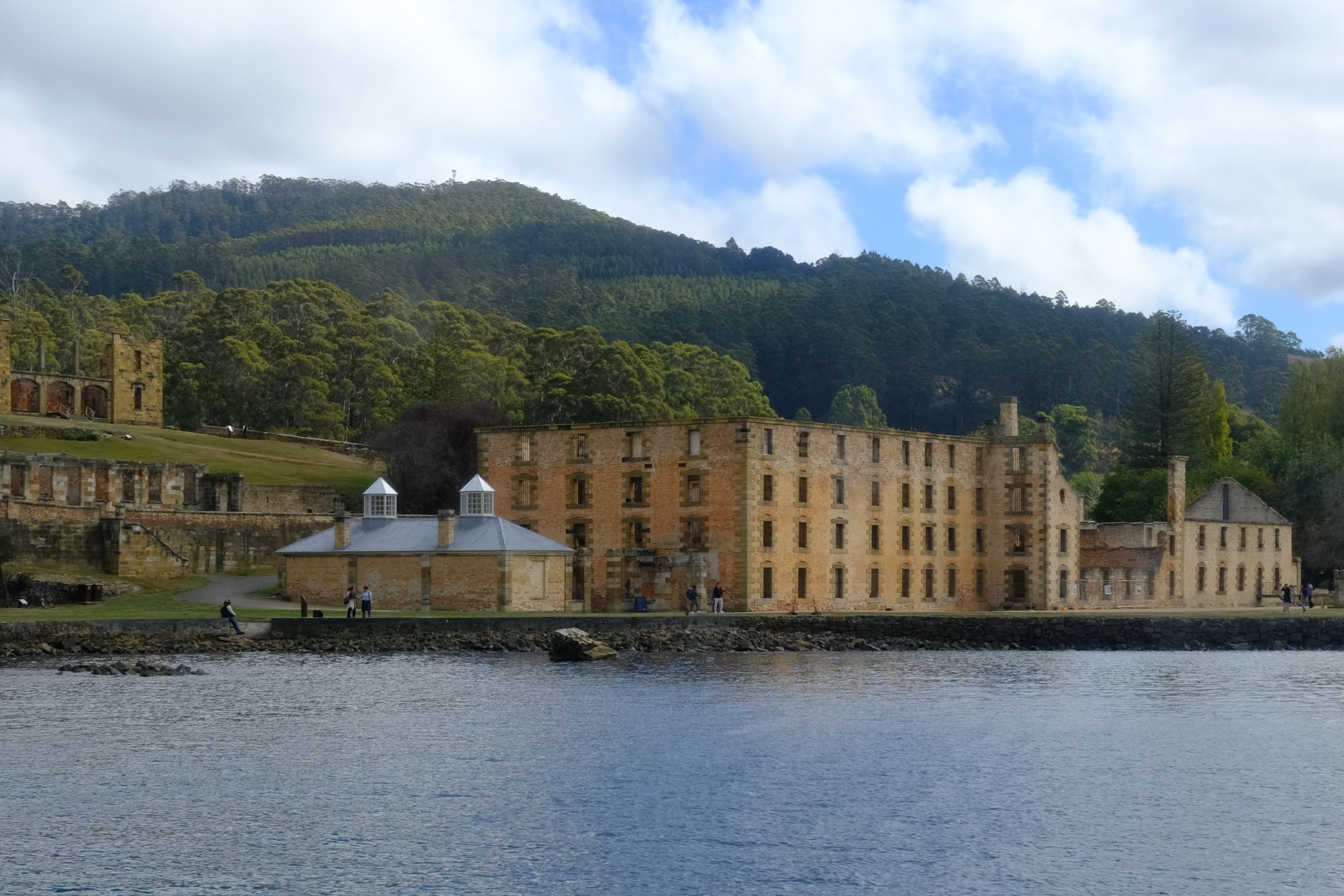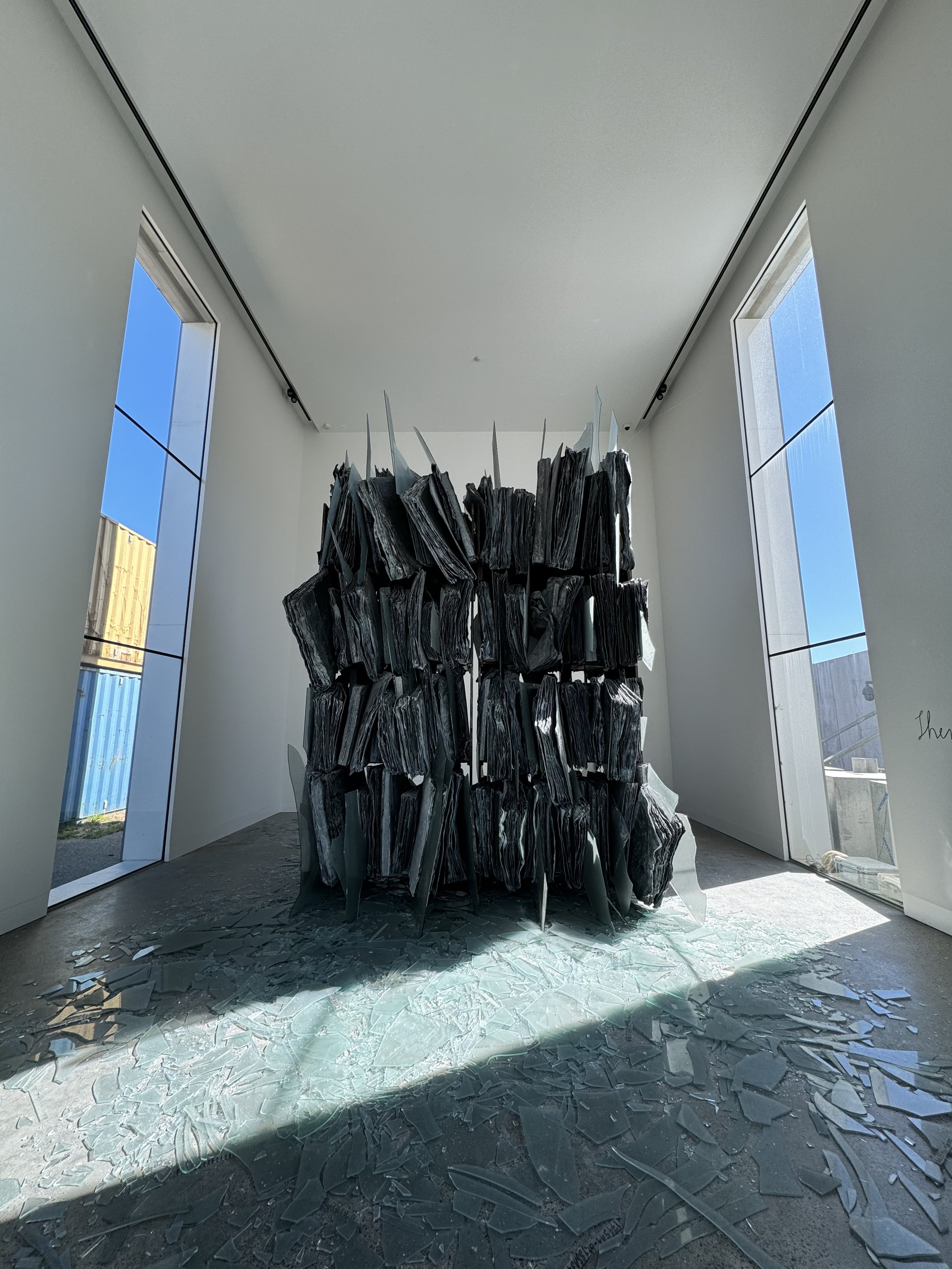Trip Report - Australia | Tasmania
Our Trip & Itinerary
We spent one week exploring Tasmania, the Australia of Australia. In our short time here we tried to cover as much of the island as we could, taking in the amazing natural beauty of the land and the fascinating cultural centers that make Hobart a truly unique city. While we were able to see a lot, we would recommend taking more time that just seven days when visiting Tasmania to allow yourself to visit more of the national parks, reach each accessible corner of the island, and ensure a clear day for Cradle Mountain.
Around The Island
If Australia is known as the “Land Down Under,” then Tasmania really ought to be called “The Land Under, The Land Down Under”. After spending the last seven weeks in dry, hot Australia we were surprised when we landed in Hobart, to feel like we had suddenly returned to New Zealand. The temperatures were suddenly much cooler, the hills much greener, and the sky much wetter than we experienced across the Nullarbor, near the Great Barrier Reef, or down in balmy Sydney. We quickly pulled out our down jackets from the depths of our backpacks and went off to find our warm, dry rental car. Although we’d just landed in Hobart, we were going to spend the next several days driving the circuit of Tasmania and our first overnight destination would be Queenstown (funny, how NZ shares this name). We had a lot of activities planned before we reached Queenstown, starting with a recuperation lunch at The Wicked Cheese Company. Given the fairly low price of a two-person cheese board, we expected a small plate to share. Instead, we were surprised when six literal chunks of cheese were delivered to our table, including plenty of dried fruit, chutney, and crackers. Feeling recharged (and a bit bloated), we drove on to Mount Field National Park to work off all that dairy. Despite some rainy weather we hoped to get a couple of quick hikes in at Russell Falls and Horseshoe Falls. The walk to Russell Falls is a lovely stroll through the Tasmanian Forest – following a small creek on your left, you wind through a lush valley until reaching a tall, multi-leveled waterfall, the creek suddenly cascading over several layers of flat, cake-layered rocks. On the other hand, the walk to Horseshoe Falls is up a vertical trail consisting mainly of hundreds of stair steps up to a smaller, but still beautiful half circle falls. Getting our fill of the forest for the day looking rather moist from the rain, we got back in our car and made the long drive towards Queenstown.
Queenstown, like most of the other west coast Tasmanian towns we stopped in, is extremely quiet this time of year. We rolled in at dusk and watched the old Tasmanian homes roll past our windows, emulating a Western ghost town in the misty fog. Our hotel, the Empire Hotel, seemed to be the only decent joint in town, and it’s adequate enough for one night’s accommodation but I wouldn’t suggest you stay there longer than you have to. By far the most interesting thing about Queenstown is the West Coast Wilderness Railway, a restored rail-link between Queenstown and the coast at Strahan offering scenic train journeys through Tasmania’s thick forests and a good look into the island’s past. Jackson watched a railway show for children when he was younger and remembers an episode that walked the abandoned tracks just twenty years ago, so the restoration of this track felt like a full-circle moment. Unfortunately for us, the railway is currently wrapping up infrastructure upgrades to part of the line, so we weren’t able to experience all it had to offer. Instead we took the steep and winding road (these are a constant theme on the west coast) down to Strahan. Hoping to spot an elusive wild Platypus, we took a slight detour at Hogarth Falls to walk the forested track. After a while of staring intensely at the stream and random driftwood, we chalked up a few sputters of bubbles as “Platypus activity.” Continuing our waterfall theme over the first few days of our trip, our next stop took us back inland to Montezuma Falls, the tallest waterfall in Tasmania. The hike out to these falls follows the former tracks of a small tramway, built in the late 1800’s to connect mining villages. This was abandoned in the 1920’s, when the population it was built to serve had dried up. The flat track follows the curve of the hills above a deep ravine for several miles, until suddenly you arrive at the base of the absolutely massive Montezuma Falls. To get the best views you need to cross a single-person suspension bridge which has a tendency to sway with any suggestion of wind, but the perspective you get of the waterfall in the middle makes the sketchy bridge over the canyon worth it. Another approach to the falls is just below their base, so expect to take a bit of a shower…with stellar views of course! On our return hike to the car park we encountered several Pademelons, fat little marsupials (much like a melon, in fact) that are mainly found in Tasmania and have some smiley similarities to their fellow marsupials all the way over in Western Australia, Quokkas.
Continuing our loop of Tasmania the next day, we budgeted a load of time at the biggest and best natural feature Tasmania has to offer, Cradle Mountain. We started our day off by grabbing coffee near our previous night's hotel at Tullah Cottage Cafe, a cute little spot at the foot of Mount Farrell with a feisty resident alpaca named Cleveland. We spent some time chatting with the owner and feeding Cleveland carrot chunks. Unfortunately, the weather had not improved since we first arrived in Tassie, so we weren’t able to get a clear look at the mountain itself. Still, there are a number of excellent hikes in the park, and several of them provide an opportunity to see wildlife you won’t easily find in other places including Wombats, Pademelons, and Tasmanian Devils. We began our day by taking the park shuttle up to Dove Lake, typically one of the best spots to view Cradle Mountain. However, on the day we were there, the clouds were low, keeping the peak hidden among the clouds. Despite the weather difficulties, we thoroughly enjoyed the 6 km loop trail around the edge of the alpine lake. As we went along, the sun peeked behind the clouds, basking us in momentary pockets of warm sunlight and creating the most vibrant rainbows we’ve ever seen. There are several trails that shoot off of the circuit, but we didn’t feel like getting that adventurous with my recovering knee and a slippery rock pairing. Instead we continued our day in Cradle Mountain National Park by walking the Waldheim overland track, which we had heard was a prime viewing spot for chunky wombats. Initially, we felt discouraged, as we couldn’t see any in the light drizzle. When crossing a small bridge near the end of the short trail however, we found ourselves in a painting: the sun created sparkles on the hills, beams illuminating the oddly tropical palms that line the stream in the valley. And, in the middle of it all, a waddling wombat the size of a duffel bag. We watched him nibble on grass and meander along the branches of the stream that cut through the valley. On our way back to the bus stop, we discovered that the hills were in fact sprinkled with dozens of other wombats, explaining the countless poo piles along the trail. Note: while these friendly circles might seem cuddly, don’t be tempted to pet them. It’s never a good idea to approach or attempt to interact with wildlife! Another option to see loads of wildlife is Devils@Cradle, a rehabilitation and rearing center for Tasmanian Devils, Wallabies, and Quolls. The center is home to dozens of Tasmanian Devils and is one of the few spaces in Tasmania, where you can see the state’s mascot up-close and personal. You can watch them be fed, scurry through the underbrush, and watch them scuffle during mating season, exposing their devilish fangs. Despite their rough appearance (raggedy tails and stumpy legs), you’ll end up leaving the center wanting to give every one of them a snack and a cuddle.
The final stage of our loop of Tasmania by car brought us up to Launceston, the second largest town in Tasmania, which has a lot of hidden charm amongst its old city center. Our stay for the night was at the Leisure Inn Penny Royal, a quirky medieval-themed hotel with big rooms and the friendliest check-in guy we’ve had in all of Australia! To continue our final stage we took off the following morning down the east coast of the island, through pleasant, quaint towns like Swansea, Little Swanport, and Orford. Our best stop was at Spiky Beach, where we were startled by wallabies in the bushes and found two hidden coves with undisturbed sands and crystal clear water, perfect for a quick rest on a long drive. Our final destination on our circuit was Port Arthur, a historic area with a well preserved penal colony, providing a fascinating look at what correctional Australia looked like. The historic site covers 146 hectares, so it’s definitely a good thing that the ticket provides access on back-to-back days – there’s just too much to see in one day! Included in the ticket is a short harbor cruise, sailing past the site of the old boys' prison and the island of the dead, where generations of Port Arthur's residents have taken their final rest. Back on shore, we wandered through the main prison building, commander's quarters, insane asylum, and the separate prison, a prison with dozens of solitary confinement cells aimed at breaking the spirits of those unlucky enough to end up there. Despite its rather dark and tumultuous history, the grounds are tranquil and honestly a great spot for a picnic. If you can budget the time, it’s absolutely worth staying for a longer visit – there’s just so much history to absorb! As we explored the site, we discovered a newer, even dark chapter for the past prison. On April 28, 1996, a gunman brought tragedy to the little town when he shot and killed 35 innocent visitors, and wounded 23 more. A famous manhunt ensued until the shooter was caught the next day; he was found guilty and sentenced to 35 life sentences without parole. This shooting led to a massive overhauling of gun laws in Australia, which have helped to prevent subsequent mass shooting events.
Hobart
We set off to finish our tour of Tasmania back where we started it, in Hobart. Along the way from Port Arthur we stopped for our mid-day coffee at Cubed Espresso Bar, a little airstream coffee cart with a fantastic view over Tasman National Park – another must stop if you’re traveling around the Tasman Peninsula. The first order of business back in Hobart was to check into our pod hostel. We typically don’t talk about hotels we didn’t enjoy, but this hostel was not a good experience and should absolutely be avoided if possible when staying in Hobart! The pods are tiny and offer no noise proofing, so you can hear everything, which really puts a damper on the whole sleeping situation. This accommodation is also totally employee-free, so there’s no one around to help figure out any issues. Additionally, the storage is limited to fairly small lockers, so forget storing any large luggage! Outside of our hostel though, Hobart is a lovely town full of interesting cafes and restaurants, all fronted by a beautiful seaside. Without a doubt, Hobart has the best food that we’ve found on the whole island. Our first dinner destination was the Loaded Dog food cart, situated in a cozy spot next to Hobart Brewing Company. We loved sitting in the sun and the community vibes of the space, especially on a summer evening!
One of the most unique offerings Tasmania has is the Museum of Old & New Art (MONA), just a 45 minute bus ride from central Hobart. The whole museum was David Walsh’s vision: a multi-story, cavernous gallery, carved into a peninsula on his vineyard estate. It opened in 2011 and took 5 years to construct but there’s already an extension on the way. We spent over four hours exploring the various spaces and exhibits – listening to a volcanic eruption in a pitch black room only lit by flashes of lighting and erupting lava, confessing our sins to a stranger through a two story listening tube, and examining a mummy suspended above a deep pool of water. Sounds absolutely nuts, right? These totally unique exhibits are the tip of the iceberg of what David has installed in his gallery. Aside from these immersive experiences, the museum is a winding maze of underground galleries filled with random artworks from his private collection. It would be easy to spend at least one full day at MONA, especially on a sunny weekend, as there is an outdoor space with vibey restaurants and bars on the grassy hill above the museum. Emerging from a multi-hour wander through MONA and having lost track of time and space, we went out searching for a tasty dinner in Hobart. It didn’t take us long to happen across one of Hobart's other charms, a street food market complete with live music. Together, we sampled snacks from four of the different carts, each from a different worldly cuisine. As night came, we watched people of all ages dance to the jazz band underneath the fairy lights.
We recommend two days for Hobart, including a day trip to MONA. Unless you’re planning on hiking Mount Wellington, you may find yourself quickly out of things to do. Luckily for us, our final day in Hobart happened to be a Saturday morning, so the Salamanca Market was in full swing. The market sprawls over several blocks and includes anything from coffee, to snacks, and shopping stalls. Hobarts surplus of these street markets definitely gave us a chance to experience the city like a local does, fighting our way to each stall, shoulder to shoulder with Hobartians. To fill our afternoon, we took our time at the Tasmanian Museum and Art Gallery, a twee little space that includes a very honest look at the horrendous treatment of native Tasman Aboriginals by European settlers. The space educates all who visit on the plight of these native communities, and how they were systematically purged from the island until no Aboriginals of wholly-Tasmanian descent remained by 1905. With this deeper look in mind, we took a short walk to some small Aboriginal art galleries along the waterfront. Although we’ve seen plenty of Aboriginal art on this trip, each piece has a unique story and it was truly our last chance to admire the intricate dot work and dream story motifs. To celebrate our travels in Tasmania and mark the end of our explorations in Australia, we had a farewell drink (or three) in Lark Distillery. Much to our surprise, we learned that Tasmania has a huge variety of whiskey distilleries on the island. Lark’s tasting room has whiskeys from over 75 separate distillers across Tasmania. The four we tried each had a unique palette profile, two of them making a delicious base for our Old Fashioneds. On our last walk back to our hostel along the harbor, we came across several live musicians playing into the evening air. One young musician caught our attention with his range and heartfelt tone – you can find him on instagram at @undersidedmusic.
Sydney (Surprise!)
We had originally been planning on starting our trip to Japan directly from Tasmania, which involved a very long, very strenuous, and not very enjoyable four-day economy itinerary with three stops along the way…#WorldTravelerLifestyle. Thankfully, we were suddenly able to change our itinerary to a one stop from Sydney with Qantas in Business (!!!) by using some of the AAdvantage miles we had been banking. With a new travel plan in hand, we hopped on the short flight back to Sydney and settled into our last Australian hotel, right in the heart of Sydney’s CBD. Our only goal while back in Sydney was to soak up the toasty Aussie sun and enjoy the ocean before diving back into Spring in Japan. We also knew our next month would be incredibly busy, so a little TLC on our free day was exactly what the doctor ordered. In that spirit, we got acai bowls for a healthy breakfast near our hotel and headed to the Marrinawi Cove swimming area by the rocks near Sydney Harbor Bridge. The water was a bit chilly, which was perfectly fine with us on this hot summer day. We spent our time tanning, then swimming, then reading, then swimming, then playing with water puppies, then tanning some more…it was perfect. Our only activity in our final evening was a very necessary journey back to Anita Gelato – it’s just too tasty to miss! With our ice cream in hand, we wrapped our time in Australia and got ready for our following day’s journey up to Japan!
Recommendations
Favorite Sights & Things To Do:
West Coast
Northern Tasmania
East Coast
Port Arthur
Hobart
Favorite Eateries & Cafes:
Hotels, Hostels, Campsites, etc.
Queenstown
Tullah
Launceston
Port Arthur
Hobart
Sydney
W𝘦 𝘢𝘤𝘬𝘯𝘰𝘸𝘭𝘦𝘥𝘨𝘦 𝘵𝘩𝘦 𝘵𝘳𝘢𝘥𝘪𝘵𝘪𝘰𝘯𝘢𝘭 𝘰𝘸𝘯𝘦𝘳𝘴 𝘰𝘧 𝘵𝘩𝘪𝘴 𝘤𝘰𝘶𝘯𝘵𝘳𝘺 𝘢𝘯𝘥 𝘢𝘯𝘺 𝘦𝘭𝘥𝘦𝘳𝘴 𝘱𝘢𝘴𝘵, 𝘱𝘳𝘦𝘴𝘦𝘯𝘵, 𝘢𝘯𝘥 𝘦𝘮𝘦𝘳𝘨𝘪𝘯𝘨.








































































































